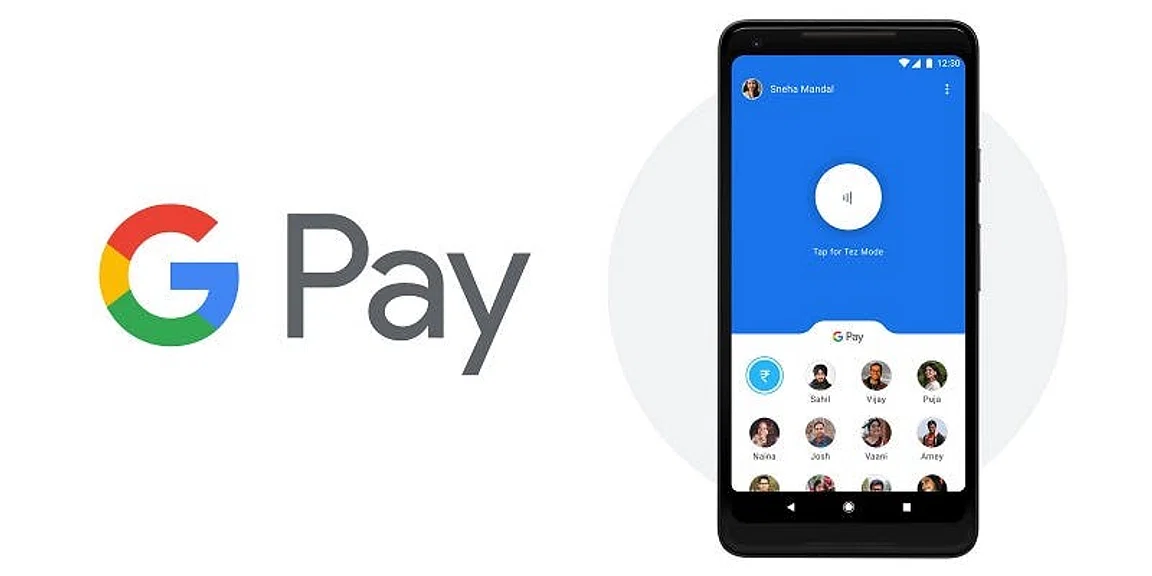Google Pay is a digital wallet platform developed by Google that allows users to make contactless payments, send and receive money, and store loyalty cards and other important documents. It is available on both Android and iOS devices.
To use Google Pay, users must first create a Google account and add a payment method, such as a debit or credit card, to their account. Once a payment method has been added, users can start making payments at stores that accept Google Pay. To do this, users simply need to hold their phone up to the contactless payment terminal.
Introduction

Google Pay, developed by Google LLC, is a popular digital wallet and mobile payment platform that enables users to make secure and convenient transactions using their mobile devices. It revolutionizes the way people handle their payments, from in-store purchases to online transactions and peer-to-peer transfers. Google Pay offers a unified and streamlined approach to managing payments, providing a seamless user experience.
Key Features and Advantages
1. Simple Setup and Integration
Google Pay allows users to set up their payment methods quickly and link them to their Google account. It seamlessly integrates with various Android devices, making it easy to use for a broad user base.
2. Secure Transactions
With multiple layers of security, including encryption and two-factor authentication, Google Pay ensures that transactions are safe and private. User data and payment information are protected, instilling confidence in users to use the platform for their financial needs.
3. Diverse Payment Options
Google Pay supports a wide range of payment options, including credit and debit cards, bank accounts, and even loyalty cards. Users can store multiple payment methods, making it versatile and adaptable to their preferences.
4. Contactless Payments
The platform facilitates contactless payments, allowing users to make transactions by simply tapping their mobile devices near a compatible point-of-sale (POS) terminal. This feature enhances speed and convenience during in-store purchases.
Getting Started with Google Pay
| Getting Started with Google Pay | Description |
|---|---|
| 1. Setting Up Google Pay | Setting up Google Pay on your mobile device by downloading the app from the respective app store. |
| 2. Supported Platforms and Devices | Checking if your device and operating system are compatible with Google Pay. |
| 3. Creating an Account | Creating a Google account or signing in with an existing account to use Google Pay. |
Linking Payment Methods
Linking payment methods in Google Pay is a straightforward process that involves connecting your preferred payment sources to your Google Pay account for seamless transactions.
- Open the Google Pay App: Launch the Google Pay app on your mobile device. If you don’t have the app, download it from your app store.
- Access Payment Methods Section: Look for the “Payment” or “Payment methods” tab within the app. This is usually located in the menu or settings section.
- Add a Payment Method: Choose the option to add a new payment method. You can link various sources, including credit or debit cards and bank accounts.
- Enter Payment Details: Fill in the required information for the chosen payment method. This may include card numbers, expiry dates, CVV, or account details.
- Verify and Confirm: Follow any additional verification steps prompted by the app or your financial institution to authenticate and link the payment method.
- Save and Secure: Once verified, your payment method is securely linked to your Google Pay account and ready for use.
- Manage Linked Payment Methods: You can review and manage your linked payment methods within the app, allowing you to add, remove, or edit them as needed.
Making Payments with Google Pay
| Making Payments with Google Pay | Description |
|---|---|
| 1. Peer-to-Peer Payments | Transfer money directly to friends and family using Google Pay app. |
| 2. Online and In-Store Purchases | Make secure payments for online purchases and at physical stores. |
| 3. Paying Utility Bills and Recharges | Pay utility bills, recharge mobiles, and manage monthly subscriptions. |
Security and Privacy
Google Pay prioritizes security and privacy to ensure that users can trust the platform for their financial transactions. Here’s a explanation of the security and privacy measures in Google Pay:
- Encryption and Data Protection: Google Pay employs encryption to secure your payment information during transactions. This means that your financial details are scrambled into an unreadable format, making it extremely difficult for unauthorized entities to access or intercept your data.
- Multi-Factor Authentication (MFA): To enhance security, Google Pay often uses multi-factor authentication, requiring you to provide more than one form of identification before completing a transaction. This typically involves a password, fingerprint, PIN, or other authentication methods.
- Transaction Notifications: Users receive real-time notifications for every transaction made through Google Pay. This immediate feedback allows you to quickly identify any unauthorized activity and take appropriate action.
- Privacy Controls: Google Pay gives users control over their privacy settings. You can manage what information you share and with whom, providing a level of customization to protect your personal data.
- Device Protection: Google Pay leverages device security features to enhance protection. These may include secure locks, biometrics, and other device-level security measures that ensure only authorized users can access the app and make transactions.
- Secure Tokenization: Google Pay uses tokenization to enhance security during transactions. Instead of transmitting your actual payment card details, a unique token is used, minimizing the risk of exposing sensitive information.
EPIC and Voter Rights
| Google Pay Features and Services | Description |
|---|---|
| 1. Peer-to-Peer Payments | Send and receive money quickly and securely to/from friends and family within the app. |
| 2. Online and In-App Payments | Make secure payments for online purchases and within supported mobile applications. |
| 3. Contactless In-Store Payments | Enable contactless payments by tapping your device at compatible point-of-sale terminals. |
| 4. Bill Payments and Recharges | Pay utility bills, mobile recharges, DTH subscriptions, and more directly through the app. |
| 5. Loyalty Cards and Gift Cards | Digitally store and manage loyalty cards and gift cards for various retailers and brands. |
| 6. Google Pay for Business | Specialized tools for businesses to accept payments and engage with customers efficiently. |
| 7. Google Pay for Merchants | Solutions for merchants to accept payments, integrate loyalty programs, and drive sales. |
| 8. Integration with Google Services | Seamlessly integrate Google Pay into other Google services like Gmail and Google Photos. |
| 9. Google Pay APIs and Integration | Access APIs to integrate Google Pay functionality into third-party applications and websites. |
Conclusion
Google Pay has emerged as a transformative force in the realm of digital payments, revolutionizing how people transact and manage their finances. In this conclusion, we highlight the key aspects that make Google Pay a significant player in the world of mobile payments.
- Simplicity and Ease of Use: Google Pay offers a user-friendly and intuitive interface, making it accessible to a wide audience. Setting up and using the app is straightforward, providing a seamless experience for both tech-savvy users and those new to digital payments.
- Versatile Payment Options: From peer-to-peer payments to online and in-store transactions, Google Pay offers a versatile range of payment options. Users can conveniently pay bills, recharge mobiles, split expenses, and even tap for contactless payments at various merchants.
FAQs
Google Pay is a mobile payment and digital wallet platform developed by Google. It allows users to make various types of payments, including in-store purchases, online transactions, and person-to-person transfers using their mobile devices.
To set up Google Pay, download the Google Pay app from your app store, open it, and follow the on-screen instructions to link your payment methods and set up your account.
Yes, Google Pay is secure. It uses encryption, multi-factor authentication, and secure tokenization to protect user data and financial information, making transactions safe and private.
You can link credit cards, debit cards, bank accounts, and even loyalty cards to Google Pay. It supports a variety of payment options to suit your preferences.
Read Also
Related posts:
- AMC Full Form: Benefits, Components, Needs, Advantage
- ORS Full Form: Dehydration, Myths, Flavors, Varieties & Facts
- PCC Full Form: Importance, Types, Application Process
- PAN Full Form: Legal Provisions, Regulations,
- BRB Full Form: Productive, Routine, Distractions
- MCD Full From: Introduction, Responsibility, Challenges
- CT Scan Full Form: Scans, price, Advantages
- USA Full Form: History, Economics,Technology, culture




















